is a new series where That’s readers share worthwhile stories of their time in the Middle Kingdom.
Dianshan Lake, with its 62-square-kilometer surface, is the largest freshwater lake in Shanghai. Located in Qingpu district, It’s the source of our cherished Huangpu river and serves as a vital inland waterway transport hub. Multiple AAAA-rated attractions, a few golf courses and a water sports park are just some of the things you can expect to find here.
Despite Dianshan Lake being dubbed the “Lake Geneva of the Orient” by a contributor on Baidu Baike, it currently has a lukewarm 3.5 stars on TripAdvisor and ranks No. 446 out of the things to do in Shanghai, as of press time.
So, what does it have to offer as a travel destination?
I decided to find out by circumnavigating the entire lake. I walked along the shoreline whenever possible (there were quite a few obstacles), which made my journey longer than the lake’s actual circumference, which is 35 kilometers. According to my Huawei Health app, the trip was around 85 kilometers in total, which I completed over five non-consecutive days.
 A map of Dianshan Lake
A map of Dianshan Lake
While walking around the entire lake didn’t bring about the greatest sense of achievement in the world – it’s quite dull, the surrounding area did have some beautiful scenery and intriguing sights.
Dianshan Lake’s shore is peaceful and often a picture-perfect countryside with fishing villages, Buddhist shrines and small vegetable patches.
The water has turquoise and greenish color like many other large lakes. Despite its proximity to the metropolis, the lake has quite visible wildlife. Fish are jumping, waterfowl flap their wings and turtles relax on rocks in the water.
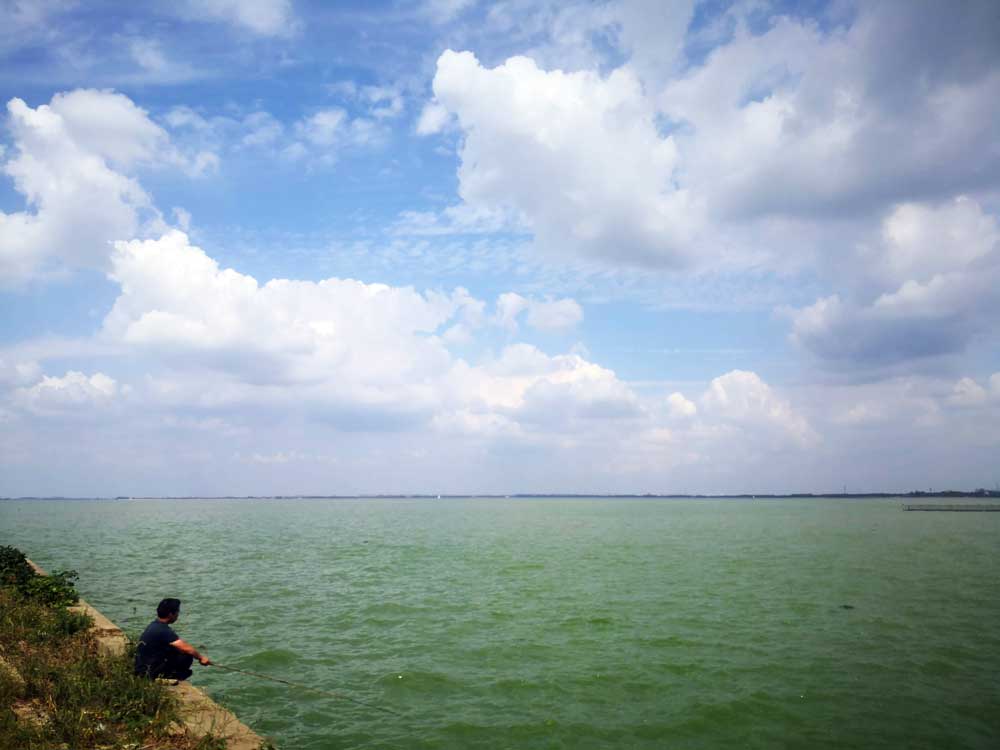 Lone fisherman
Lone fisherman
The lake has historically been a fishing and rice farming area. It even has an annual rice festival with a rice tasting competition. But in recent years, rice and other crops have increasingly swapped for various real estate projects, most noticeably luxury housing. The housing estates usually have the same villa one hundred times over, a phenomenon sometimes referred to as the ‘McMansion.’ Each housing estate will have an architectural theme like ‘French romantic,’ Tudor or Spanish colonial.
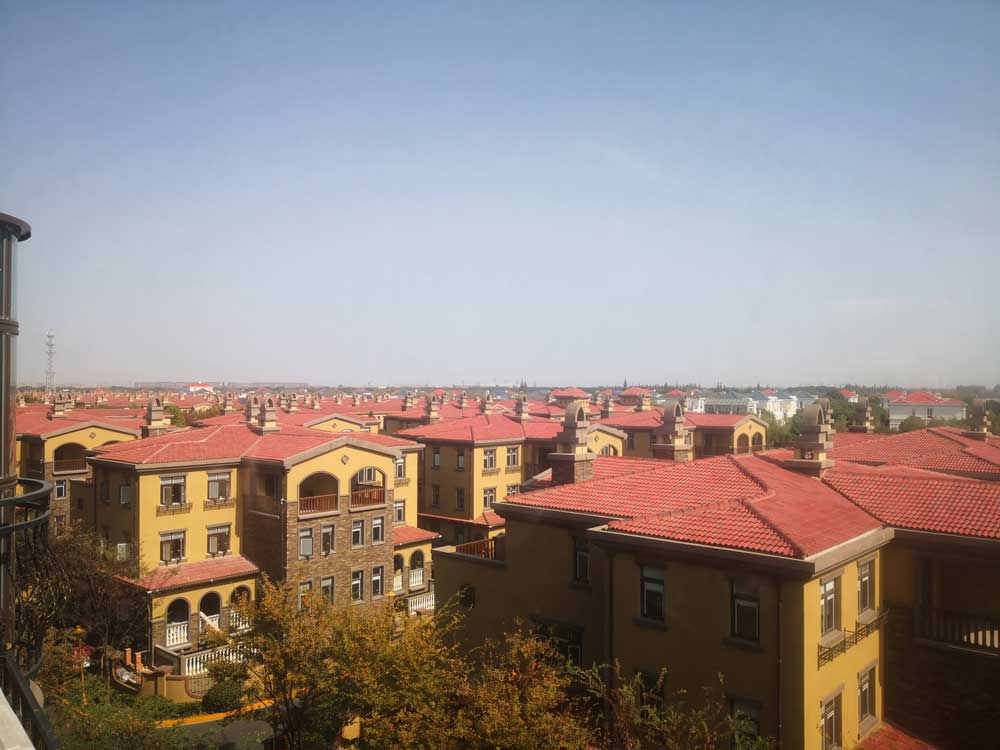 Tuscan villas as far as the eyes can see
Tuscan villas as far as the eyes can see
I went on a viewing where the various homes on display looked straight from Tuscany. Attending a viewing here is not difficult; many young men from all over the country sell villas along the roadside next to fruit stalls and fish markets. It was here that I met an enthusiastic real estate agent from Henan province who was eager to show me properties.
I made it clear that my net worth should have me seen living in a tent, but apparently, I looked wealthy enough and got a tour where he showed me real estate valued at RMB9.8 million. A bit stiff for me personally, but I promised to work hard and see him again next year.
The push to sell high-end housing comes from the fact that it’s in high supply around here. A significant amount of the finished homes have not been sold yet, despite having been completed for years. These near-empty luxury estates are a sight to behold. Upon entry, everything looks great; it’s well-guarded, well-kept and full of extravagant villas. But as you look closer, the truth emerges. The water in the roundabout’s fountain is brown; the tennis courts’ nets have long ago given in to ayi using them as drying racks. Only about 10% of the houses have residents in them. The doors are open, and the windows are shattered; some homes are slowly getting reclaimed by nature.
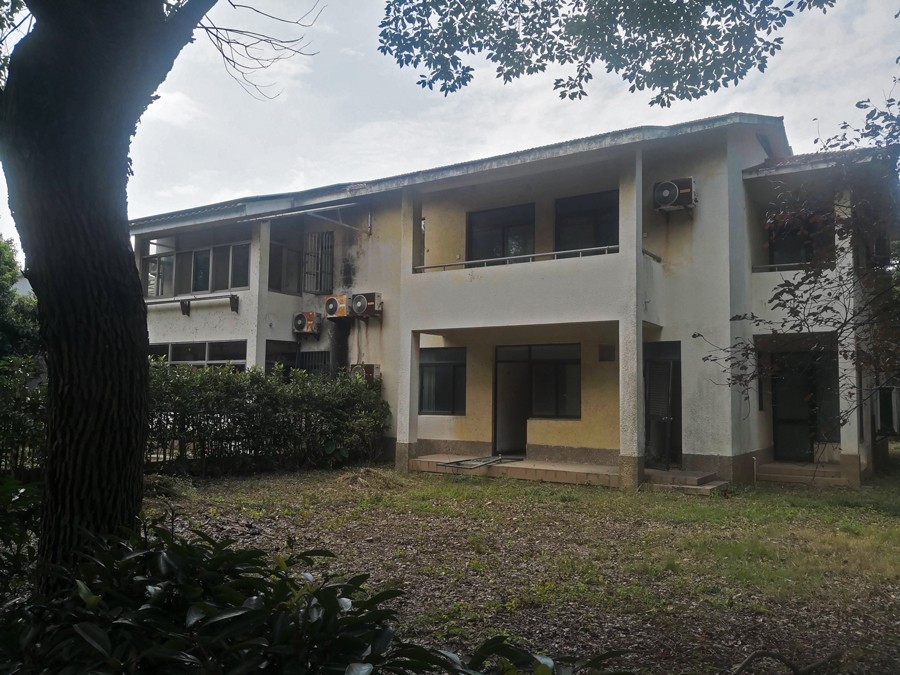 Classic vacant home
Classic vacant home
The houses that do have residents look great, like suburban dream homes. The most exclusive mansion model looks like it belongs on Wisteria Lane. The area looks pleasant until passing through the de facto central area, which is hauntingly empty. It seems kind of creepy to live in a community where the closest neighbor lives ten vacant houses away.
But not only homes are vacant: Across the road from the AAAA-rated Shanghai Grand View Garden, there is an area full of ramshackle Southeast Asian Buddhist temples. The temples are fenced in and marked as dangerous buildings with entry prohibited. With not a person in sight, it’s a rather intriguing area, especially at night.
 Leaning tower of Dianshan
Leaning tower of Dianshan
The most impressive vacant building of them all is a Grand Hotel inside a housing estate on the lake’s west side. I saw it on my way to the Suzuki Ultimate Outboard Engine Expo, which took place on the estate’s dock. The scale of it was astounding, and it was so dark inside I could only see a couple of meters into the lobby. If I had a GoPro with me and a YouTube channel dedicated to exploring believably haunted stuff, I could have generated some income.
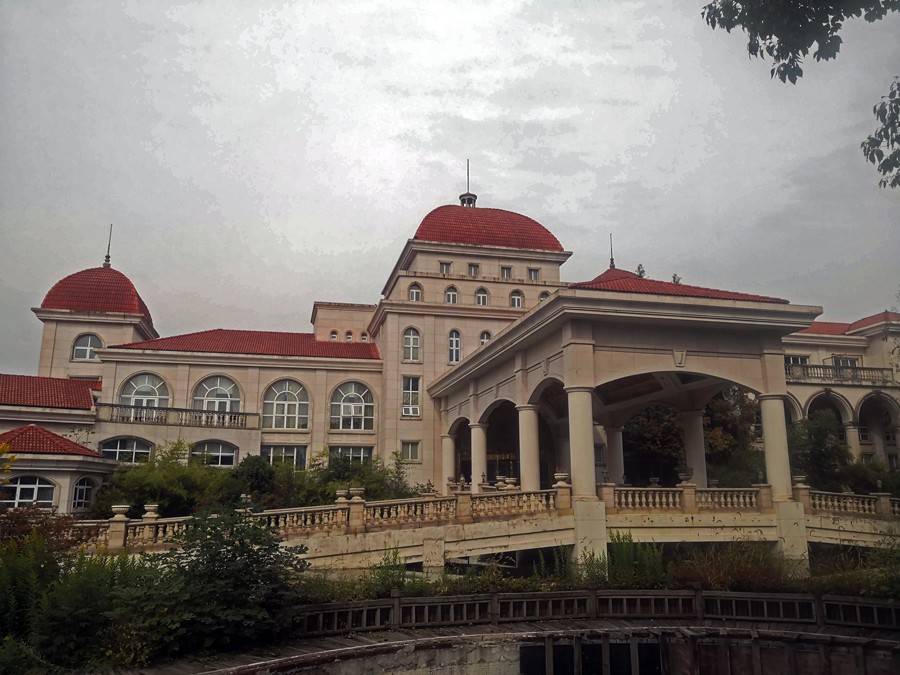 This whole hotel stands empty
This whole hotel stands empty
 Not going in there
Not going in there
Not everything built on the shore of the lake is awaiting residents, though. Dongxing Yacht Club seems to be thriving. I couldn’t enter as I wasn’t wearing my yachting attire, but I could see it was full of cheerful people and big boats; it even had its own KTV.
 Sailing away from the sunset
Sailing away from the sunset
The lake lies right on the border between Shanghai and Jiangsu, Qingpu district owns three quarters, and the remaining quarter belongs to Kunshan district.
Jiangsu has taken a different approach with its lakeshore area. There are mowed lawns down to the shoreline, framed by concrete walls. Much of the lake’s shore has been solidified to prevent erosion. Pavilions made for BBQ parties are everywhere. Statues, parks and running tracks add a little extra for residents.
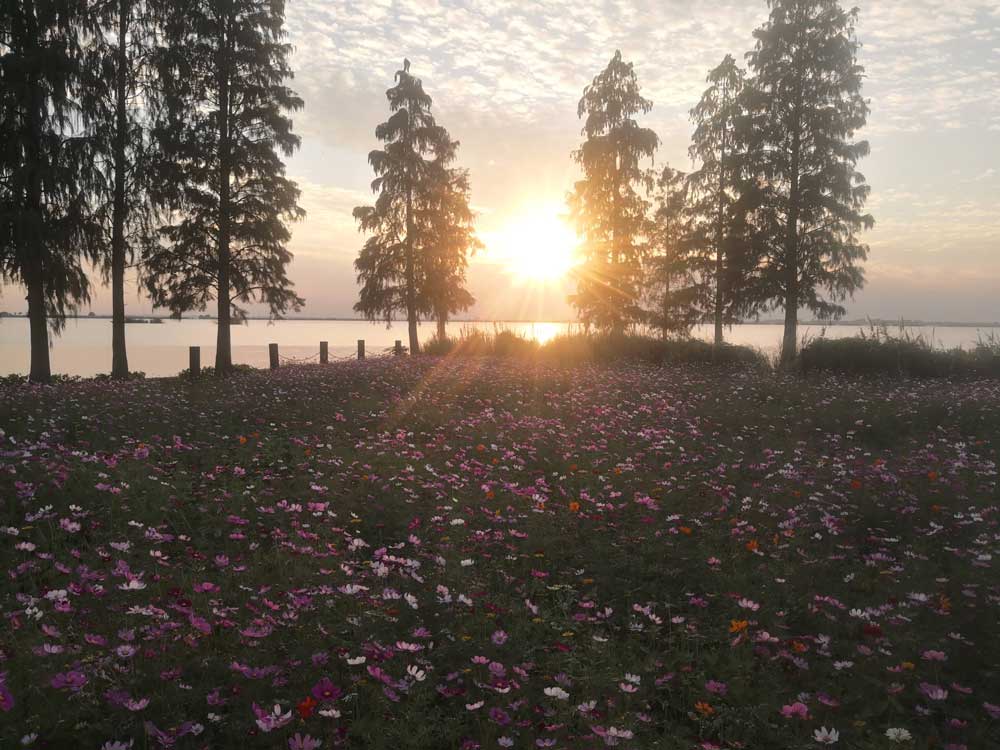 The flower fields are great for pictures and attract many women, and their husbands, boyfriends and wooers follow diligently, taking photographs as instructed
The flower fields are great for pictures and attract many women, and their husbands, boyfriends and wooers follow diligently, taking photographs as instructed
These factors give the Jiangsu side a less natural look than Shanghai’s more wild side but seem like a more leisurely spot for residents.
Cars from every province are parked along the promenade; the local industrial parks seem to draw a young and diverse crowd. People are grilling in droves; it smells good. Perhaps a selling point for the nearby properties.
The lake also serves as a car wash for some people. Bring your polish, sponge, fill up a bucket with lake water and have at it.
Back on the Shanghai side, to stay as close to the lake as possible, I had to stumble through quite a few fishing villages. Some of them look near-identical to my xiaoqu (neighborhood) in the city, with the main difference being fishing equipment, boats and the day’s catch.
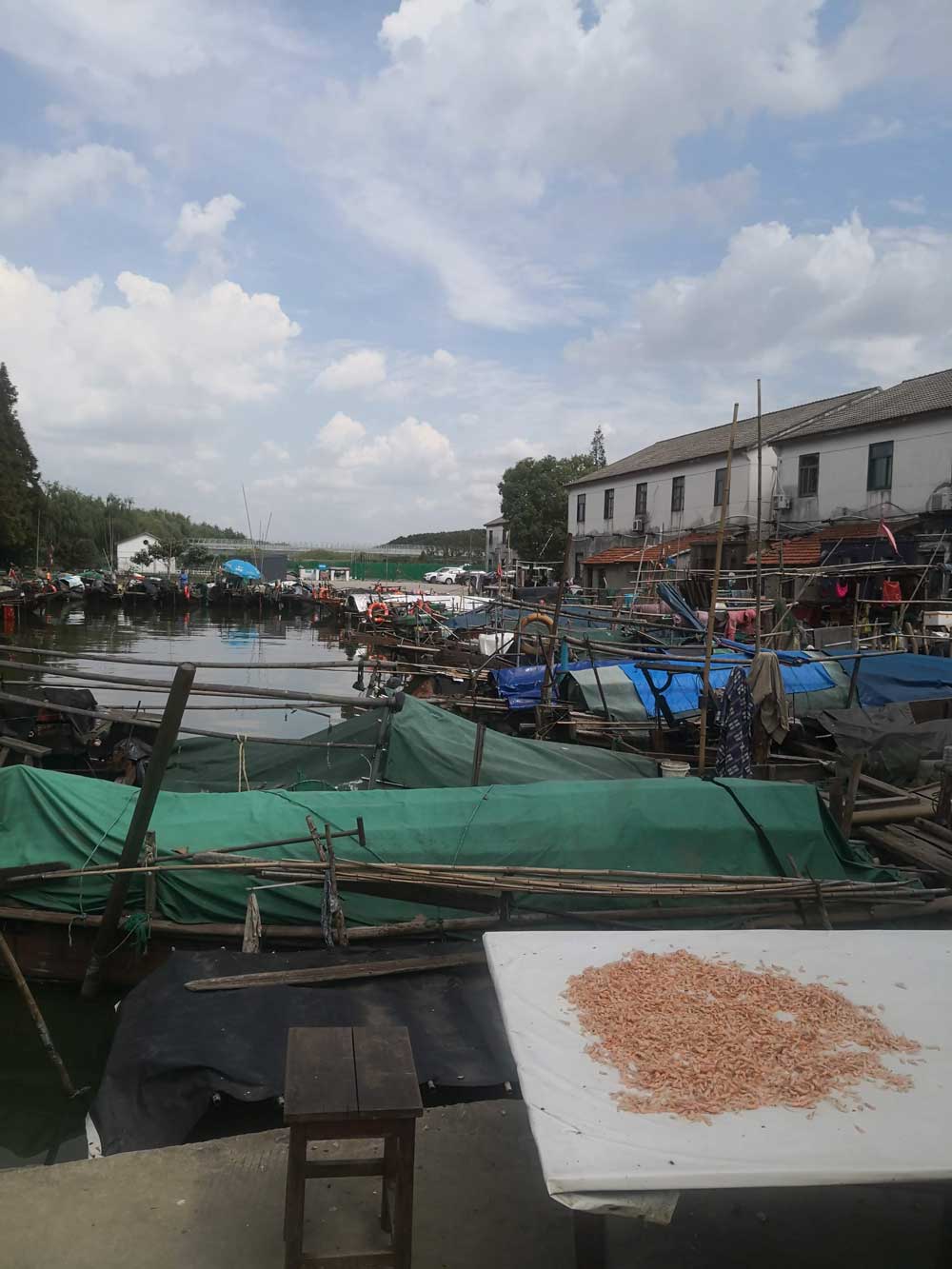 Today’s shrimp haul, ready for your noodles
Today’s shrimp haul, ready for your noodles
There are also many recreational fishermen around the lake. Most of them fish for variations of carp while others were trying to catch turtles by using nets. There are over 40 species of fish in the lake, so there is all to play for.
If you don’t want to try your luck at the lake, there are many artificial fishing ponds along the highway where you’re provided with a rod, bait and a place to sit. There’s even a kitchen where you can pay to have your catch cooked by someone else.
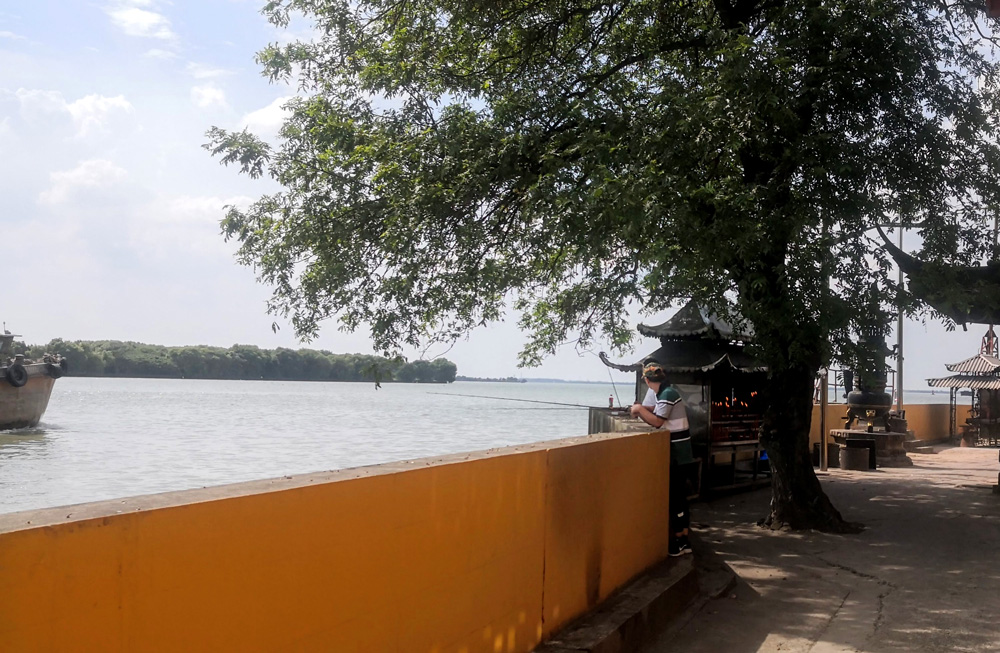 At Baoguo Temple, you can pray for good luck in fishing and get right to it
At Baoguo Temple, you can pray for good luck in fishing and get right to it
If you want to watch fishing in reverse instead, go to the lake’s south side and observe the Buddhist practice of fangsheng (known as ‘life release’ in English). For a few renminbi, you can free animals from imminent death; in this case, river snails. The ritual is carried out by dumping buckets full of snails into the lake, accompanied by chants playing on a loudspeaker. In the background, people are plowing through the water and flipping on jetskis. 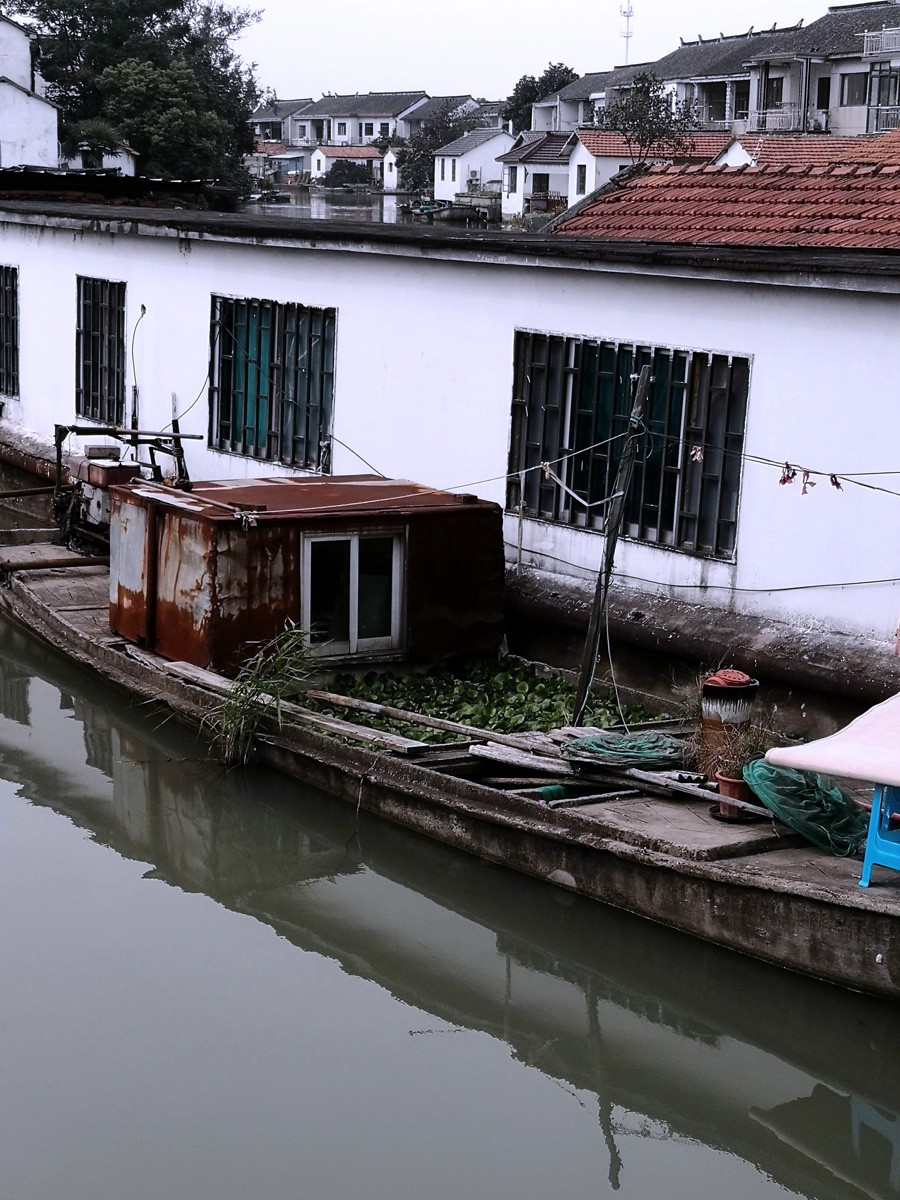 The most innovative vegetable patch I've seen in a while
The most innovative vegetable patch I've seen in a while
The largest settlement located on the lakeshore is Shangta. It was especially welcome during my trip as I could enjoy fried rice with an omelet on the side for RMB14 and stock up on quick carbs after a long walk. Fun old buildings, a relaxed vibe and river canals make it different from other Shanghai municipality centers. Calling it Venice is overselling it, but it’s a delightful little town nonetheless.
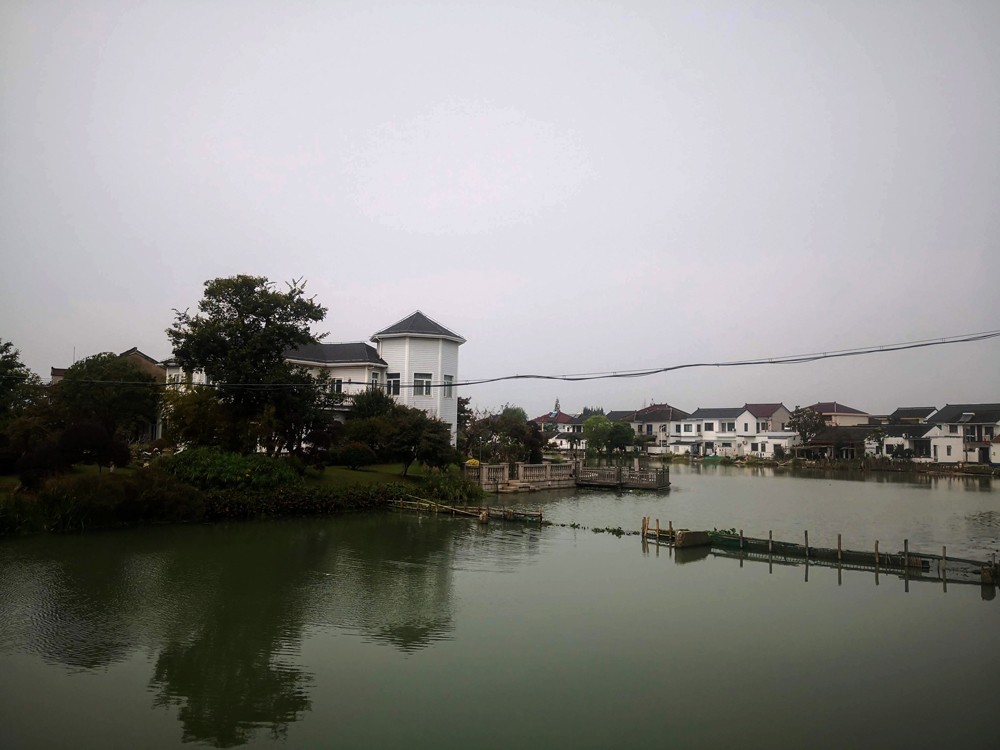 Shangta
Shangta
East along Shangta’s lakeside promenade (which is excellent) lies Caibang village, located at the point furthest into the lake. There are two thriving resorts here and even more under construction. Old swapped for new in a beautiful village that at times looks more like a construction site. Perhaps a glimpse into the future for many of the peaceful villages here.
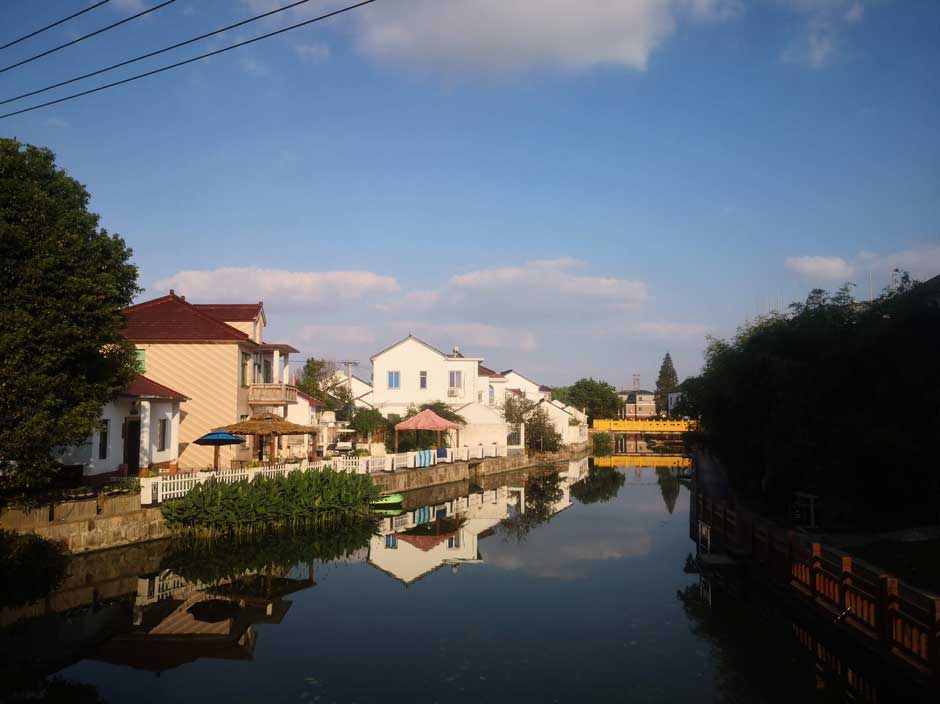 Caibang village
Caibang village
Baidu Maps was confusing to use at times, as some sort of land transplant happened in 2017. A big part of the east side is marked as a landmass in the app but is, in reality, an extension of the lake that was dug out a few years earlier. Some of the earth has moved further south to create an artificial island. This might not sound too dramatic, but it’s somewhat confusing when you have put blind faith in Baidu and expect acres of land but get water instead.
 Me alone at the True Love Pier, props to my real estate agent for taking this picture while trying to sell me a mansion
Me alone at the True Love Pier, props to my real estate agent for taking this picture while trying to sell me a mansion
Admittedly, this walk is not something I would recommend. You can’t trust Baidu Maps; land is water, water is land; outdated maps left me in the middle of busy construction sites more than once.
Less than half the shoreline has promenades and other walkways. Many attractions such as golf courses, gardens and the Legoland construction site aren’t located on the lakeshore as expected, but rather in the surrounding area. There can be kilometers between notable locations.
But the biggest letdown by far in walking around Dianshan Lake was that it’s not practically possible. The lake is not meant to be circumnavigated and is a series of painful setbacks on non-connected roads in a constant search for the one closest to the lake. If you do find yourself around Dianshan Lake, I’d recommend taking a Didi or bus to one of the more scenic spots.
Getting there
Take Metro Line 10 to Hongqiao Railway Station, then switch to Line 17 and ride it until Oriental Land (东方绿舟). Once there, take a city bus or Didi to your destination. If you want to go to the Jiangsu side, get off Line 17 at Caoying Road Station (漕盈路) and take a Didi or bus to your destination.
To see more of Laksemo’s adventures, follow him on Instagram (@Laksemo).
For more Readers Reports, .
[Images provided by Sindre Laksemo]
This is a place for show life about china, If these articles help you life better in china, Welcome to share this website to your friends, Or you can post questions about china life in FAQ, We will help you to find the right answer.

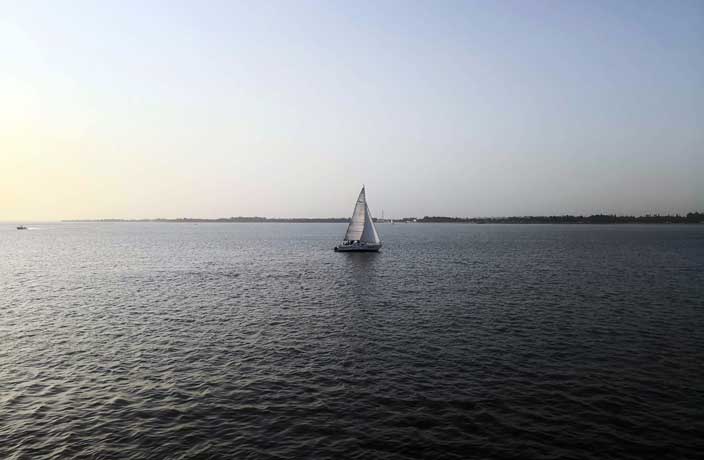
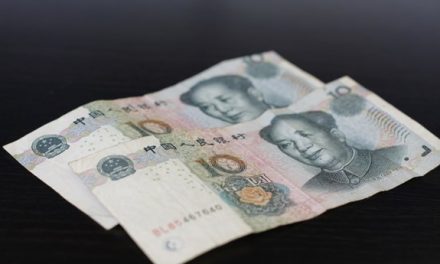

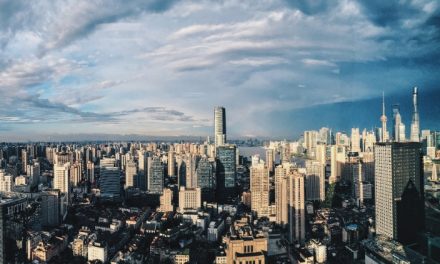
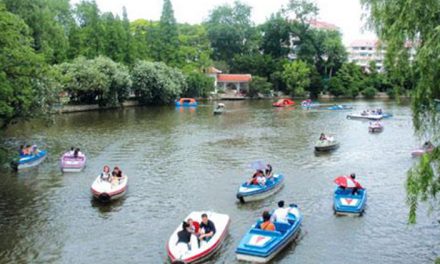
Recent Comments